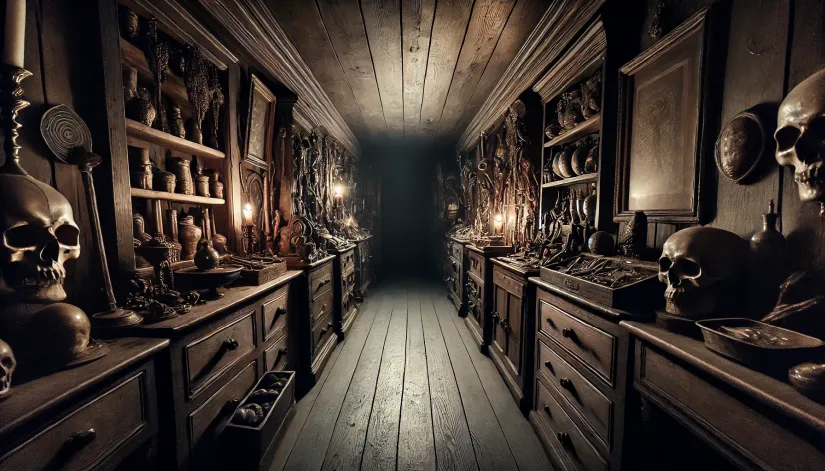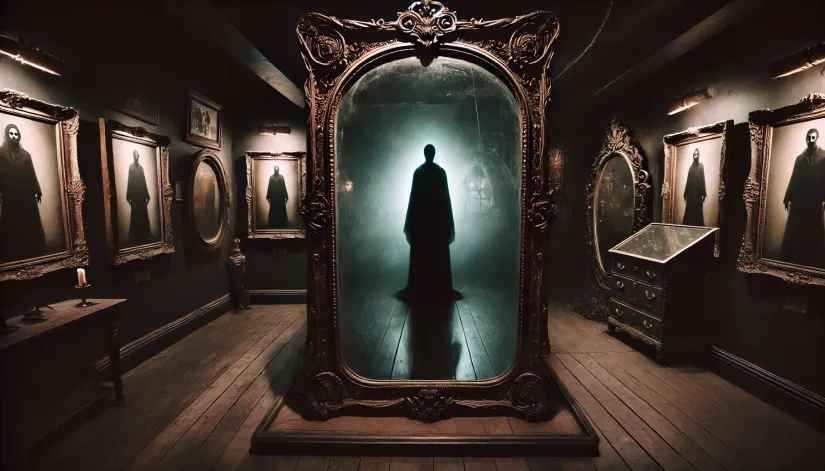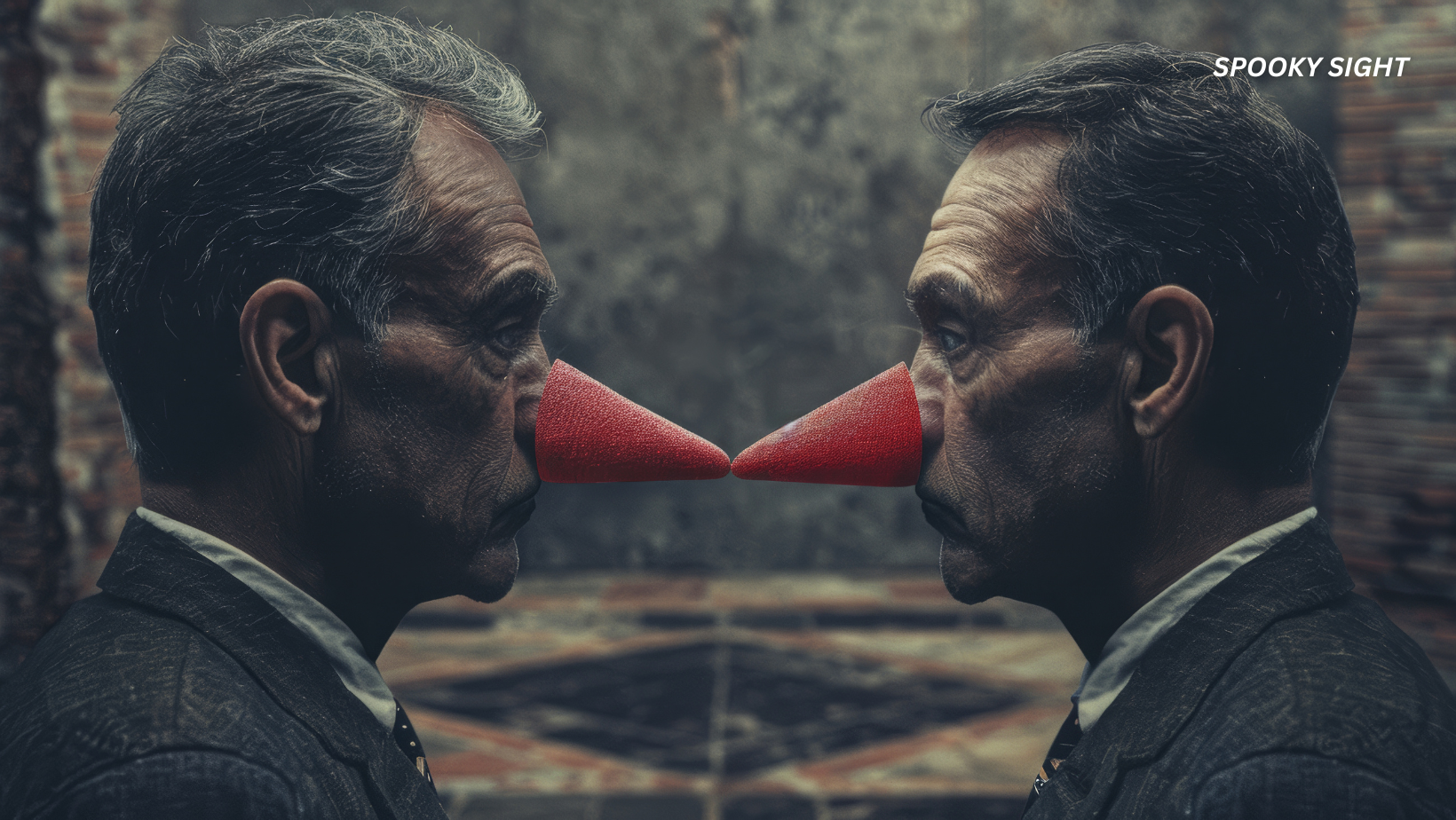Deep within the quiet town of Monroe, Connecticut, lies a chilling collection of haunted relics and cursed artifacts. All tucked away in what was once the basement of the legendary Ed and Lorraine Warren.
But here’s the catch—this isn’t your typical spooky museum. There’s more to the artifacts inside than meets the eye.
So, what dark secrets do these objects hold? And why are people so desperate to visit the Warrens’ Occult Museum despite the risks? The story of the Warrens and the artifacts they swore to protect is one you won’t forget.
In this article:
What is the Warrens’ Occult Museum?
In 1952, two of the most famous names in the paranormal world, Ed (a self-taught demonologist) and Lorraine (a self-described clairvoyant), ventured into a mission that no one else dared to tackle—they founded the New England Society for Psychic Research (NESPR).
The organization’s purpose? To investigate and document all forms of paranormal activity (including hauntings, possessions, and other supernatural phenomena).
They started small. However, as their reputation grew, so did the cases they were called to investigate.
Over time, NESPR became well-known for handling high-profile paranormal cases. Some of the best examples we can think of are the 1971 Perron family haunting in Harrisville, Rhode Island (which later inspired The Conjuring movies) and the 1976 Amityville Horror.
But their work didn’t stop at investigations. Over the years, the Warrens acquired numerous haunted and cursed objects during their cases. These items (some believed to harbor dangerous energies) couldn’t simply be left lying around.
So, Ed and Lorraine Warren took it upon themselves to keep these objects safe. Their solution? To transform their once quiet home into what would eventually become the famous Warrens’ Occult Museum.
Hidden away in the basement of their home, the museum accommodated many items the Warrens claimed to be “touched by evil.” Over time, their collection grew. Today, the museum is what many consider the world’s most infamous trove of paranormal artifacts—and not without reason.

What Artifacts Are Inside the Warrens’ Occult Museum?
So, the Warrens didn’t just keep their collection of haunted objects in some dusty warehouse. Nope. They stored them right in the basement of their own home. But what exactly are these objects?
Here’s a complete list of all the most infamous and spine-chilling artifacts that have been housed in the museum over the years:
| Object Name | Acquired From | Year Acquired | Related Case | Particularities | Type of Object |
|---|---|---|---|---|---|
| Annabelle | Acquired from a nursing student in Hartford, CT | Early 1970s | Annabelle haunting case | Raggedy Ann doll; responsible for near-fatal accidents; locked in a glass case with “Do Not Open” sign. | Possessed |
| The Shadow Doll | Discovered during an investigation in the U.S. | Unknown | Case of a couple experiencing nightmares | Made from bird feathers and human teeth; used in curse rituals to cause nightmares. | Cursed, Haunted |
| Satanic Idols | Found in Sandy Hook, Connecticut Woods | Early 1990s | Investigation into satanic rituals in Sandy Hook | Linked to dark occult practices; believed to carry malevolent energies. | Cursed, Occult |
| The Devil’s Rocking Chair | Collected from David Glatzel’s possession case | 1980 | “Devil Made Me Do It” case | Levitation during exorcism; linked to demonic possession and a murder defense. | Possessed, Haunted |
| Voodoo Dolls | Various cases, including New Orleans and Caribbean | 1970s | Multiple voodoo curse cases | Linked to rituals designed to harm specific people; generational curses. | Cursed |
| The Conjuring Mirror | Retrieved from a case in New Jersey | Late 1980s | Summoning ritual gone wrong | Used in summoning spirits; believed to act as a portal for spirits to manifest. | Haunted, Occult |
| The Pearls of Death | Acquired from Rhode Island | Early 1990s | A woman narrowly escaped death while wearing them | Necklace allegedly strangles its wearer; passed down through generations. | Cursed |
| Human Skulls | Found during investigations in Europe and U.S. | Various | Investigations into witchcraft and necromancy | Used in necromantic rituals; communication tool between the living and the dead. | Occult, Cursed |
| Vampire’s Coffin | Discovered in New England | 1970s | Investigation into New England vampire lore | Used in vampire exorcism rituals to trap or contain a vampire spirit. | Haunted, Occult |
| A Child’s Tombstone | Found in Connecticut woods | Late 1980s | Investigation into local satanic cult | Used as an altar in satanic rituals; believed to summon demonic forces. | Cursed, Occult |
Why is the Warrens’ Occult Museum Closed?
Now, the bad news. The Warrens’ Occult Museum officially closed its doors to the public in 2019, shortly after Lorraine passed away.
Despite what you may think, the closure wasn’t due to some paranormal event linked to the artifacts inside. The reasons were more of this world—zoning violations and community concerns.
What exactly happened? Well, the museum was located in a residential neighborhood. Which had long been a source of tension among the residents.
As the Warrens’ fame soared (especially with the massive success of The Conjuring films), more and more fans flocked to the quiet community.
What had initially been a modest basement housing allegedly haunted artifacts became a nationwide fascination. Hundreds (if not thousands) of visitors showed up unannounced—sometimes even peering into neighbors’ windows and causing disruptions in the area.
Despite Tony Spera’s efforts to control the influx of tourists—such as putting up “No Trespassing” signs to keep some of the peekers away from his neighbors and adding extra security measures—nothing could prevent the museum from becoming a local disturbance.
By 2018, the local administration had to step in. Claiming zoning violations, authorities decided to close down the Warrens’ Occult Museum.
In truth, the place was never designed to accommodate large crowds. Monroe Police Chief John Salvatore explained that the narrow residential road couldn’t handle the traffic that fans generated.
Plus, the location wasn’t equipped for public parking, and the Warrens’ home wasn’t legally zoned to operate as a commercial museum.
Controversy and Criticism
While the Warrens’ Occult Museum attracted hordes of curious visitors and paranormal enthusiasts, it has also been controversial.
Ed and Lorraine Warren faced intense skepticism from the very beginning. Many doubted the legitimacy of both their investigations and the artifacts they claimed to be haunted or cursed.
The criticism also reflected upon their museum. And as the fame grew, so did the voices of critics who disputed that the Warrens were anything more than skilled at telling ghost stories.

Not Everyone Believes the Artifacts Are Real
One of the most vocal critics is Dr. Steven Novella (a published neurologist and a leading skeptic in the paranormal field). Novella, who has written extensively on paranormal claims, has repeatedly dismissed the Warrens’ evidence as “highly questionable” and lacking scientific rigor.
He argues that many of their high-profile cases were either fabricated or grossly exaggerated.
For example, in an article published by the New England Skeptical Society, Novella asserted that the Warrens were talented storytellers. Yet, there was no verifiable evidence to support their claims of demonic activity.
Another prominent critic, Joe Nickell, a renowned paranormal investigator and skeptic, has also dissected many of the Warrens’ cases and the backstory of their collected artifacts.
In his book “The Science of Ghosts” (2012), Nickell explained that much of the so-called “evidence” could be, in fact, attributed to natural phenomena, psychological factors, or the power of suggestion.
To support his claim, Nickell looked into the 1977 Enfield poltergeist case and the Perron Family haunting. His conclusion? Eyewitness testimony and faulty perception played a significant role in both cases. Both cases did not hold up under scientific scrutiny, and the Warrens rarely, if ever, provided concrete proof for the claims they made.
Lastly, there is the financial part. Or the financial gains. Warrens benefited financially from these high-profile cases. They didn’t charge for their services. But they made substantial profits from book deals, speaking engagements, and selling the rights to their stories.
Adding fuel to the fire, the museum itself, during its operational years, charged high entrance fees. For instance, at some point, visits were organized exclusively for groups of at least six people at $75 per person.
The Future of the Warren Collection
Despite growing interest, the museum’s future is uncertain. Spera has hinted at reopening the collection in a more suitable location. However, as of 2024, no official plans have been confirmed.
As for the Warrens? Whether they were true paranormal defenders or simply master storytellers remains a subject of debate.
Ultimately, it’s up to you to decide—was the museum a vault of supernatural power, or just another chapter in the long history of America’s obsession with the unknown?







